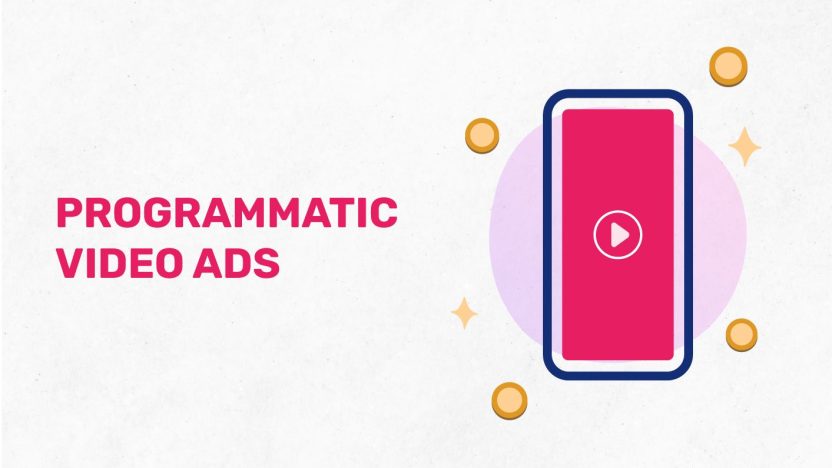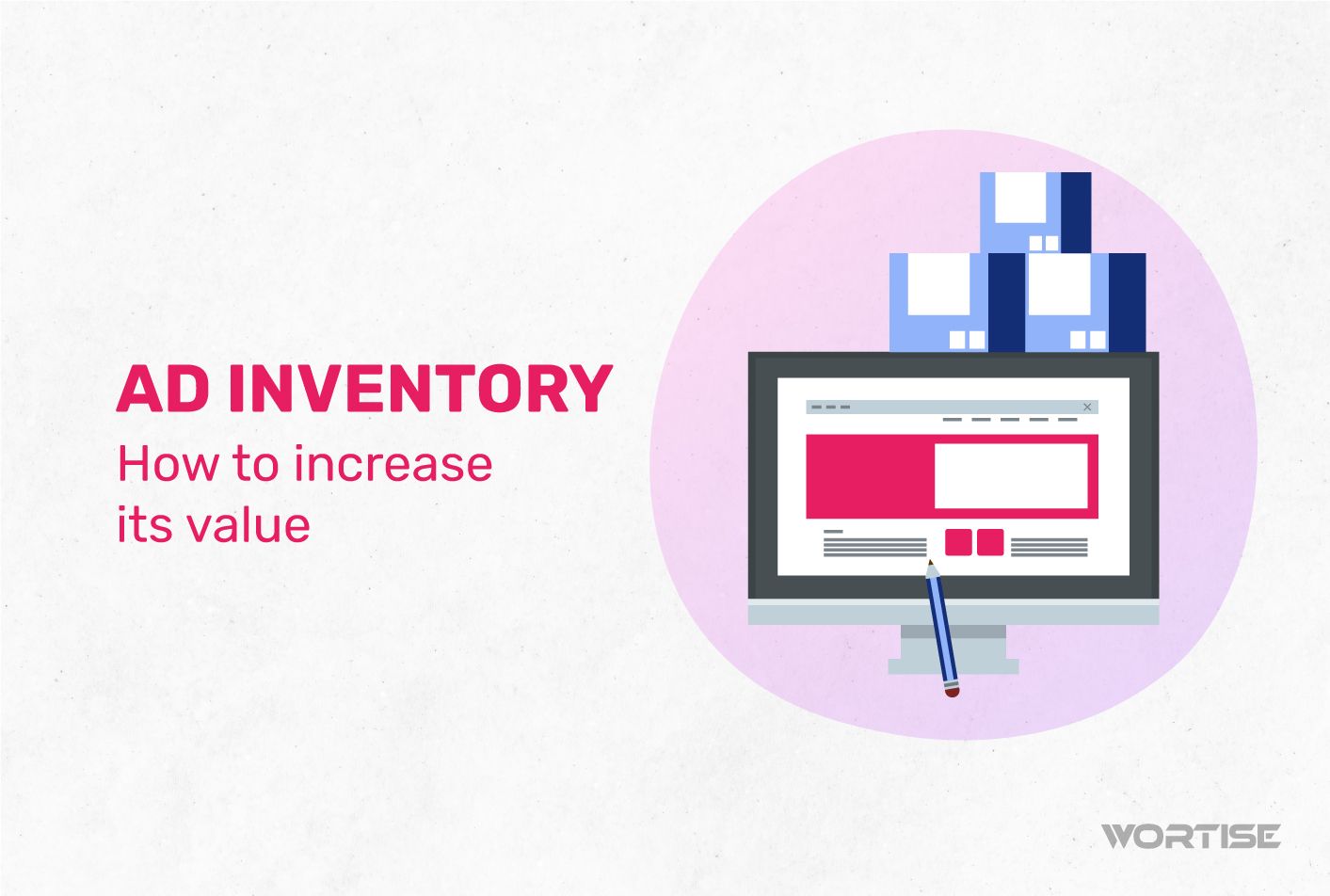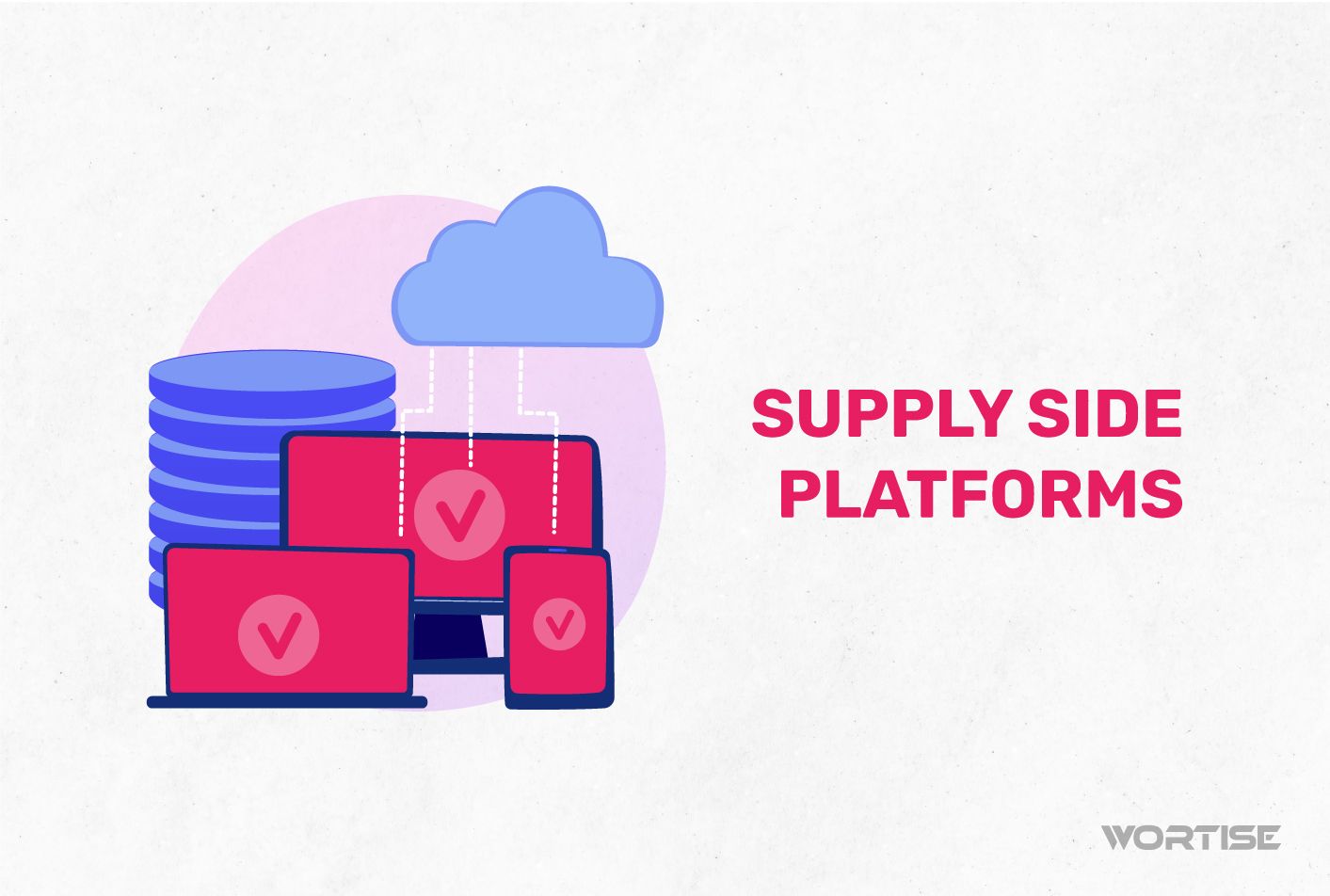As predicted by the British group The Buggles 40 years ago, video is the leading format. Now, it dominates a new space: online content. For this reason, programmatic video ads are among the most used creativities in mobile applications. And, although they generate good revenue, they can bring you more profits if you apply these 9 tips to monetize with this format.
If 91% of marketers include videos in their plans, according to NogenTech, it’s because they know the power of this format. You too can achieve more benefits than expected by combining effective strategies with the strengths of video ads.
Programmatic video ads, a growing format
The placement of this ad format is the goal of programmatic video advertising. Through this system, the buying and selling of spaces for the publication of these ads are automated. Parameters such as audience segmentation are used, and the results are continuously evaluated.
For publishers, the benefits come from multiple sources. On the one hand, they are more visible to the community of advertisers, making their ad inventory more attractive. On the other hand, they have a higher potential for reporting effective impressions due to the engagement these contents generate in audiences.
Images have power and generate profits
The success of programmatic video ads responds to the new behavior of digital platforms. Tutorials, news, stand-up, conversations with public figures: all these formats rely on moving images and speak of the success of these contents in the digital world.
And if you still have doubts, let’s look at the reach of video in numbers. YouTube, the main streaming platform in the world, receives around 14 billion monthly visits. According to Hootsuite, it is estimated that 81% of internet users have accessed this vast repository of online audiovisual materials.
In the case of streaming, it is estimated that revenues from video over-the-top (OTT) reached $154 billion US dollars, according to Statista, a company that provides other interesting data. In the United States, for example, an investment of more than $78.5 billion in video advertising is expected for 2023.
But this panorama would not be complete if we do not think about the next generation of consumers that will shape the course of digital marketing: Generation Z. They are a group marked by platforms like TikTok, which generated more than $4 billion in advertising revenue in 2021.
By now, you can see why designing an ad inventory without programmatic video ads is a cardinal sin.
Versatility and adaptability: these are the types of programmatic video ads
If you want to make the most of this type of creativity, you must first know its types. This will help you better visualize which ones are best suited to the nature of your application and your ad inventory. Additionally, you can optimize your monetization plans to increase your revenue through this channel.
Video in-stream
It is often used within streaming platforms. Creatives can be served in three moments: before showing a video (pre-roll), during its playback (mid-roll), or at the end (post-roll).
In this format, there are also skippable programmatic video ads, which can be skipped after a few seconds of playback, and non-skippable ones, recommended for brand reinforcement campaigns.
How can you earn as a publisher? In this case, your earnings from monetization can be calculated using the Cost Per View (CPV) model for skippable ads. For non-skippable ones, the payment model is Cost Per Mille (CPM).
Video out-stream
This type of programmatic video ads does not appear embedded in the video playback line. It is located anywhere in the advertising space of a website or mobile application, so it does not interrupt the user experience. In fact, the sound will only be activated if the user interacts with the ad.
In this case, the payment model will be CPM. Ad networks establish minimum interaction times with the video to consider an impression valid.
Video in-display
In this case, the video is displayed as a banner and is placed in graphic ad blocks. On websites, they are shown at the top or on the sides. When combined with personalization strategies, they can guarantee a high rate of effective impressions and adapt to the world of mobile devices.
To ensure synergy between advertisers and publishers, ad networks establish specific dimensions for this format. It is a safe way to boost visibility in mobile applications.
With this ad format, you have four possibilities for monetization. In addition to CPM, advertisers can pay you through Cost Per Click, Cost Per Action, or fixed amounts, regardless of the results finally obtained.
Other types
In the world of programmatic video advertising, there are also other formats. Native and interstitial ads, as well as playable ads, are among the creativities that can generate benefits. Incorporate them based on the operability of your app and the characteristics of your audience.
What is the ideal programmatic video ad?
For this question, there are no universal or conclusive answers. It all depends on the purpose of your application, your user community, and the type of advertiser you want to reach.
Also, it is necessary to consider which ad payment model is most convenient for your purposes and expectations. The CPM model, for example, may seem more convenient if you are just starting in the world of programmatic advertising and want to ensure a minimum flow of income.
Now, if you are a reputable publisher who can negotiate your ad inventory directly with advertisers, you can explore models such as Cost Per Action.
Press “Play” on your earnings with these 9 tips to monetize more with programmatic video ads
You probably already know the performance of this format in monetization plans and believe you are making the most of it. Although it is a creativity that generates good earnings, it can bring you even greater benefits with these 9 tips to monetize more.
#1 Get to know your user community well
When it comes to designing and optimizing monetization plans, it is vital to start with the profile of those who use your application. Their age, geolocation, and other data of interest, such as the devices they use, will give you a clear idea of the types of creativities that can attract them.
This information is also essential for ad exchange networks, as it will be easier to connect with advertisers who are compatible with your development. And if you consider negotiating direct implementation campaigns or Private Market Place (PMP) campaigns, the accuracy of the data is even more critical.
If you have already incorporated programmatic video ads, evaluate Key Performance Indicators (KPIs) such as Click-Through Rate (CTR) or Effective Cost per Thousand Impressions (eCPM). Identify the ads that bring the most benefits to your plans, characterize them, and start fine-tuning your strategies.
#2 Evaluate your ad space to ensure optimal ad placement
Although programmatic video ads are attractive, their placement can further enhance their engagement capabilities. The more visible the location, the greater the chances of achieving effective impressions.
Also, consider the behavior patterns of your users: how much time they spend in your app, how often they enter it per day, and which functions they use most. This can better guide the choice of locations to serve these creativities and offer an optimal user experience.
#3 Check the dimensions of the video players
Although different sizes are used in programmatic video advertising, publishers and advertisers report higher earnings with larger formats. In general, ads with dimensions equal to or larger than 1280 x 720 are noticed by 90% of users of an app, according to Adpushup.
If you want to ensure a good CTR and effective impressions, you can also consider formats that take up the entire screen or most of it, as long as you respect the user’s navigation. For this reason, formats such as interstitial ads are popular, and other formats like apps open ads are on the rise.
#4 Use autoplay videos wisely and cautiously
While size is key to increasing your ad revenue, you should also review other details like autoplay. Platforms and ad networks establish conditions for using this format, such as keeping the videos muted, to avoid negative impacts on the user.
At this point, the hook will be the moving images. If the app user is interested in this creativity, they will directly activate the sound. It is a way to maintain balance in your ad space and encourage interaction.
#5 Short or long video? User habits will indicate the ideal duration
While standard times for programmatic video ads are managed in ad networks, ranging from 6 to 30 seconds, the creativity that will work best is the one that adapts to your community.
If your users use the app for specific tasks, a 30-second video might scare them away. They will feel they are wasting their time, and that can be the death of you as a publisher. This makes it essential to have adequate segmentation to avoid missing opportunities.
#6 Evaluate the performance of programmatic video ads with first-party data
Nothing beats the information you get directly from your application. With this data, you can determine how video ads are performing within your monetization plans. At the same time, you can devise new strategies that contribute to your earnings.
By starting with first-party data, you also provide more precise data to ad exchange networks for better placement of your inventory and help improve your reputation. Users and advertisers will see your development as a trustworthy space.
The best part of all this? Your source of information complies with user privacy regulations and helps you get into contextual advertising.
#7 Offer your ad inventory through different ad exchange networks
Even if your ad inventory is well designed, that is not enough if it is not offered. At that point, it is essential to join ad exchange platforms that are connected to as many ad networks as possible.
By doing so, you have more possibilities to attract advertisers interested in your user community. Additionally, the possibilities of placing your entire inventory will be much greater.
#8 Take advantage of header bidding
Header bidding offers are an excellent way to place ads, especially if they are out-stream videos. They generate more interest among advertisers and, at the same time, increase the chances of obtaining a higher CTR and ensuring a good return on investment.
To implement this mechanism, you must incorporate a header bidding wrapper, a mechanism that connects with several demand-side platforms (SSP) and ad exchanges. In this field, the best-known wrapper is Prebid.js.
#9 Continuously optimize your application
If you want to include programmatic video ads in your inventory, first ensure that your development is at its best. Correct latency issues, constantly monitor the behavior of your users, and improve the utilization of your ad space.
By continuously working on your application, you will not only see your revenue from monetization grow but it will also be easier to adapt to new programmatic video ad formats and attract advertisers willing to pay more to advertise on your development.
Ready to make the most of your programmatic video ads? At Wortise, we help you consolidate your monetization plans
We live in a world where moving images are conquering almost everything. That’s why, dear publisher, you cannot stay behind: programmatic video ads must be in your ad inventory! Don’t know how to make the most of them? We will design the best plan for you.
At Wortise, we help you increase your earnings as a publisher with our advanced ad network platform with access to over 100 Ad Networks.
We provide personalized support, the highest eCPM in the market, and guidance with tactics to maximize your earnings.




